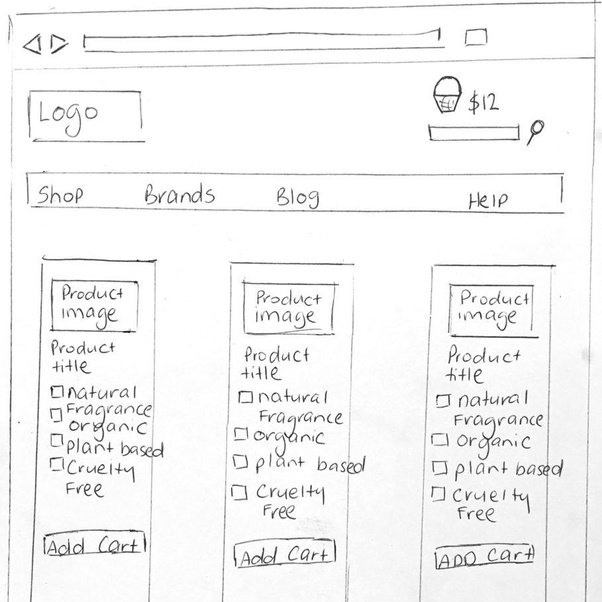A product requirements document (PRD) defines the purpose and scope of a product. It captures critical aspects of the envisioned product so that all stakeholders have a clear understanding of how the problem will be solved.
Although most people associated it with the traditional (waterfall) development methods, it’s really useful for agile teams too, with some adjustments. When a PRD is created as a part of lean product development process, it usually starts with defining a particular release and expands iteratively, just like the product expands over time with feedback cycle.
PRDs are a crucial step in the product design process, as they help capture all necessary information about the product with its technical and functional requirements. That’s critical to avoid confusion later down the design and development process. It also walks teams through every important aspect of the product and keeps everyone on the same page.
Ultimately, the goal of the PRD is to provide a validated guide within which the team can effectively design and develop a product or a version of a product. If you are working on a new product or an MVP, usually PRD comes after identifying the scope. When it’s time to define what will be in the MVP depending on your market research, you should turn back to the feature list you defined and eliminate some of them, maybe add some new ones. After the feature list is certain -for now- you are ready to write a PRD (product requirements document).
What is PRD (Product Requirements Document)?
A product requirements document (PRD) is a complete statement of a product’s needs for a particular release. A well-written PRD can provide the best foundation for a successful product.
PRD is critical not only because it aligns the product team into one shared vision but it also helps you to think through all the details of the product. It also helps to organize disparate information, define acceptance criteria for feature sets, and plan the product in advance so that the risks caused by uncertainties are minimized. In most cases, a product is not built alone, but with a team and teams require communication. So, it’s really beneficial to have a healthy communication base -such as a PRD- about the product.
You create the PRD before starting to build the product and feed it with adjustments through the whole product life cycle. Using the PRD in such a way turns it into a living document and the “go to” place for the product vision, requirements, or goals, a company ensures that everyone is aware of the latest updates and that the original vision is preserved. By being able to identify critical missing features for your product you can also focus on these features before releasing your product.
Why PRD (Product Requirements Document) is Important?
PRD is a big part of the communication of a team about the product. It makes any new stakeholder, team or team member be on the same page with you in the future. While building the product, it is much more important since the development and design will rise on the PRD. PRD is also important for prioritizing and versioning when it comes to lean product development.
If there is a well-written PRD, the need to discuss or explain the details of a feature again and again with new team members or stakeholders is eliminated. So the onboarding becomes faster and all team members have extra time for building things that will have value for users.
How to Make PRD Lean? What a PRD Should Include?
A well-planned PRD should draw the lines of the product’s core details such as functionality, usability and performance. Features and their specifications should be in PRD at least for the next planned release. To support the development of every functionality planned for the product, there should be briefings that show how a user will use that functionality. If a feature is complex, further technical/logical details might be provided for the others. Each of these functionality items would contain its own use cases. In addition to specific features and functionality, the product requirements document should include an overview/purpose for the release. It should detail exactly what the product team is trying to achieve with the release.
Here is a list of the things you might consider adding to your PRD:
- Summary, Vision
- User stories
- Features and Entities
- User Flows
- Screens/Mockups/Wireframes
- Data Architecture & Other Tech-Related Notes
- Version Planning
- Notes on Marketing Strategy
Furthermore, a PRD might include what you don’t do, since it’s all about falsifying and eliminating other ideas when it comes to lean product development.
PRD (Product Requirements Document) Templates
It is quite difficult to guess what kind of a PRD you need. However, you can use the templates below to better understand what a good PRD looks like, then you can create your own PRD. When writing a PRD, you basically do not want to reinvent the wheel. Don’t try to create each and every detail from scratch. Instead, reuse existing known templates.
There are several templates created by product teams that you can use as a head-start. You can check out the ones below:
To sum,
Overall, a good PRD is considered as a primary resource for planning, of what needs to be done, who is going to do it and when it’s going to be completed. A well-written PRD can save a tremendous amount of time.
A comprehensive product roadmap is required to ensure that the design, development, and quality assurance teams are all on the same path and deliver on the expectations. A well-written PRD would be able to provide it.

